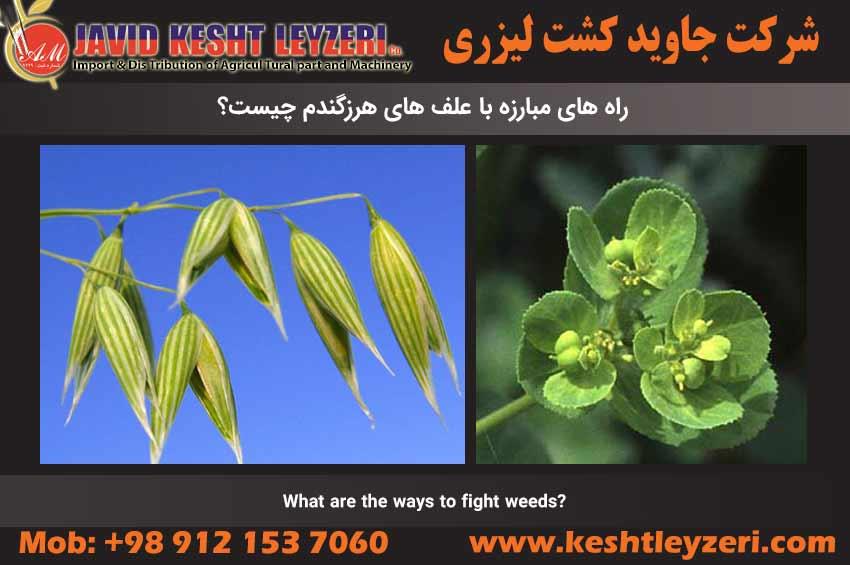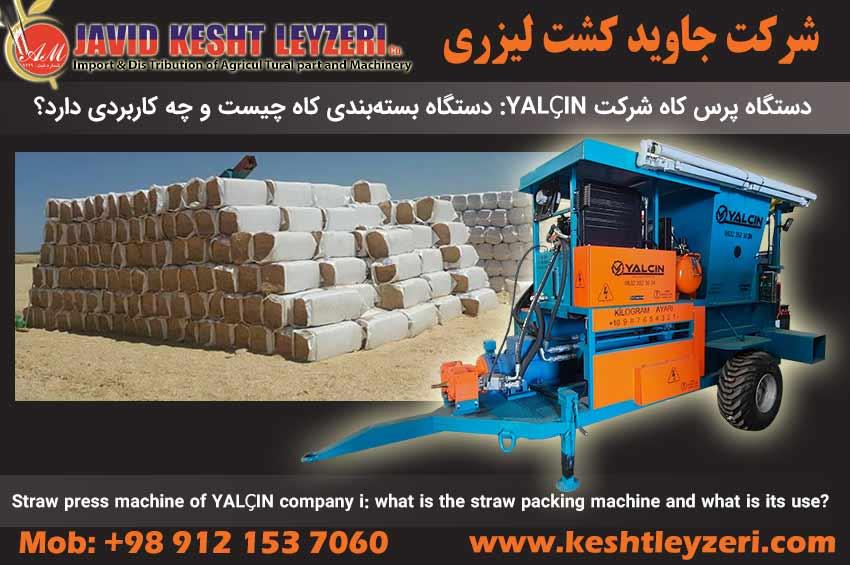
What are the ways to fight weeds?
javid keshtleyzeri Co.ltd
Contents list:
What is weed?
What are the types of weeds?
How is the fight against weeds?
What are the methods of weed prevention and management to improve farm yield?
What are the mechanical methods for weed management?
What are the agricultural methods for managing weeds?
What are the ways to fight weeds?
In the following, the above contents will be reviewed.
What is weed?
A weed is a plant that grows uninvited inside crops. These plants can increase plant pests and diseases, and in some temperate regions, their damage is estimated up to 15% of the total crop.
What are the types of weeds?
Broadleaf weeds (dicotyledons):
sticky
Chamomile
sorrel
Gandmak
Rattle
Salma Tara
bitter
wild conger
sand
Ferfion
Flixweed
Uzmak
Narrow-leaved weeds (monocotyledons):
wild oats
fox tail
valley atmosphere
Rye
straw
wild rye
howl
bloody
How does the fight with weeds take place?
Considering the importance of wheat in nutrition, choosing the best method of fighting and managing weeds is of particular importance. The main methods of management include prevention, mechanical, agronomic and chemical.
Prevention: Prevention means preventing the entry and spread of weed seeds into the field. Simple and cheap measures can prevent weed seeds from entering the field.
Mechanical control: Using mechanical methods such as grazing and heat can help control weeds.
Weed management with agricultural methods: using agricultural methods such as planting cover plants and optimal management of water and soil helps to reduce the growth of weeds.
Chemical control: Using herbicides carefully and in the amount recommended by experts can control weeds.
What are the methods of weed prevention and management to improve farm yield?
Prevention means preventing the entry and spread of new weed seeds into the field. Weed seeds often enter the field through irrigation canals, agricultural implements, and cultivated seeds. Simple and economical measures can prevent weed seeds from entering the field.
What are the mechanical methods for weed management?
Manual vagina and row cultivation:
Manual weeding is possible for small farms and propagation of wheat seeds by workers.
This method is also effective for weeds with large organs and not removed with poison.
What are the agricultural methods for managing weeds?
A) Changing the planting date:
Due to the presence of moisture and the greening of grasses, the field is disked and then wheat is planted.
b) Plant density and uniformity:
The uniformity of the plant in the field is important so that the empty space does not provide a suitable environment for the growth of weeds.
c) Timely withdrawal:
Harvesting should be done without delay so that the fall of wheat seeds and weed seeds and contamination of the field is less.
d) crop rotation:
Every year, a new crop should be planted in the land and avoiding consecutive cultivation of wheat for two or more years in the same land.
What are the chemical methods to fight weeds?
Chemical methods or spraying the field with herbicides are used as a last resort in situations where the field is infected with weeds and the use of herbicides is necessary despite the observance of agricultural principles.
Important points in the use of herbicides:
Calibrate and adjust the drop amount of sprayers.
Spraying in suitable weather conditions (temperature above 10 degrees Celsius and no strong winds).
Change the type of poison every 2 to 3 years in order to prevent weed resistance.
Knowing the range of effects and strengths and weaknesses of herbicides: in the labels and technical brochures of the containers of herbicide products, the number of sensitivity and resistance of the types of weeds to each herbicide is specified, and the amount of consumption is specified for the different growth stages of each type of weed. Using herbicides carefully can be more effective in controlling weeds.
Conclusion: The successful combination of these methods and the implementation of a suitable management program can reduce the negative effects of weeds and improve the quantity and quality of wheat products. Consultation with agricultural experts is also recommended.
What are the ways to fight weeds?
Fighting weeds is an important challenge in agriculture and even in green spaces and gardens. For optimal weed management, you can use the following guide:
Education and recognition:
Identifying weeds is important. Knowing the type of grass and learning about their life cycle and methods of transmission will help farmers.
Use of organic materials and green manure:
Using organic fertilizers as a source of nutrition for plants helps to strengthen the natural defense system of plants and increase their resistance to weeds.
Soil cover:
The use of soil cover with the habitat of harmful plants can prevent the growth of weeds. This may be through mulching (such as oat plants) or bio-covers.
Use of thermal generators:
Thermal generators can be used to control weeds on the soil surface. This method dissolves the seeds and reduces the grass population.
Using plants that attract beneficial insects:
Plants that attract beneficial insects can help control weeds. For example, flowers and plants with small branches and flowers can attract beneficial insects and increase their numbers.
Use of biological control:
Biological control agents, such as beneficial bacteria, fungi, and insects, can be used to manage weeds.
Use of herbicides:
Using chemical herbicides carefully and on time can help control weeds. To use these materials, you must follow the instructions exactly
Adhere to the action and dosages recommended by the manufacturer.
Why management:
Grazing periods may be able to control some weeds. Greenhouses, pastures or pastures can be used to manage weeds.
The most important point is that the weed control strategy should be a combination of different methods to prevent the development of resistance in weeds. Also, it is always best to consult with agricultural experts before using any method.






